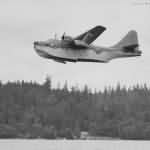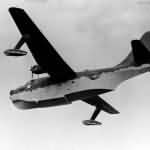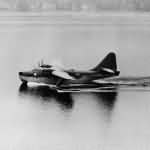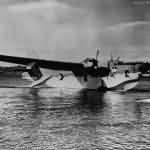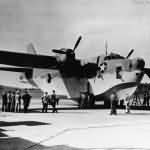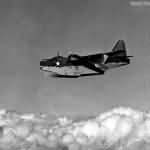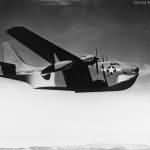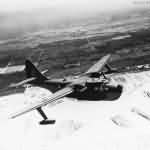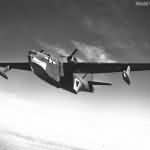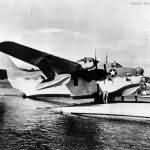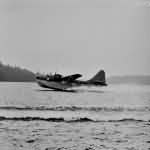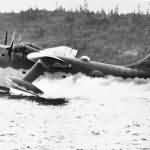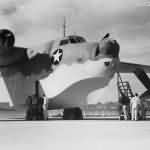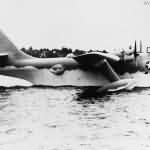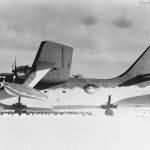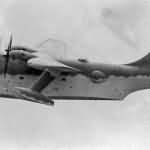XPBB Sea Ranger
Sea Ranger in flight
Washington Lake tests 1942
Prototype XPBB
Prototype XPBB
XPBB in flight
Flying boat XPBB 1943
XPBB 1943
Sea Ranger 1943
XPBB-1 Sea Ranger
XPBB-1 Lake Washinghton
XPBB-1 Lake Washinghton
XPBB-1 front
PBB Lake Washington
PBB 1943
“Lone Ranger” in flight
At the end of the 1930s the U.S. Navy was interested in heavy flying boats capable of attacking enemy ships at long distances. Based on these needs Boeing began to develop a patrol flying boat, which received the corporate designation Boeing Model 344. The design was based on the Model 314 “Clipper” transport boat. To increase range, this project incorporated the wing design solution later used in the Model 345, B-29 “Superfortress”. The power plant was two Wright XR-3350-8 Double Cyclone engines with 2,300 hp each. To increase the combat range of the patrol plane it was planned to launch it from a catapult installed on a huge barge, which would almost double its range.
On June 29, 1940, the U.S. Navy signed a preliminary contract with Boeing to build a prototype aircraft designated the XPBB-1, with a subsequent delivery of 57 more. The XPBB-1 ( 3144) first flew on July 5, 1942. But by this time an event occurred that radically affected the fate of the plane – a month before the first flight, the Battle of Midway took place. During that battle American bombers destroyed four Japanese aircraft carriers. Consequently, US Navy revised its views on long-range patrol boats, betting on land-based bombers, and the contract for the Sea Ranger was cancelled. Long, oceanic patrol flights were performed by Consolidated PB4Y, the sea version of the excellent Consolidated B-24 Liberator. The unquestionable supremacy of US Navy in the Atlantic, growing successes in the war with Japan and emphasis on air offensive of heavy strategic bombers were the reasons for resignation from serial production of Sea Ranger.
The only built XPBB-1 (aka “Lone Ranger”) was transferred in 1943 to the San Diego Naval Base where it was used for various tests over the next few years. After that it was transferred to Norfolk Naval Air Station in Virginia.
Source
Peter M. Bowers: Boeing Aircraft since 1916
